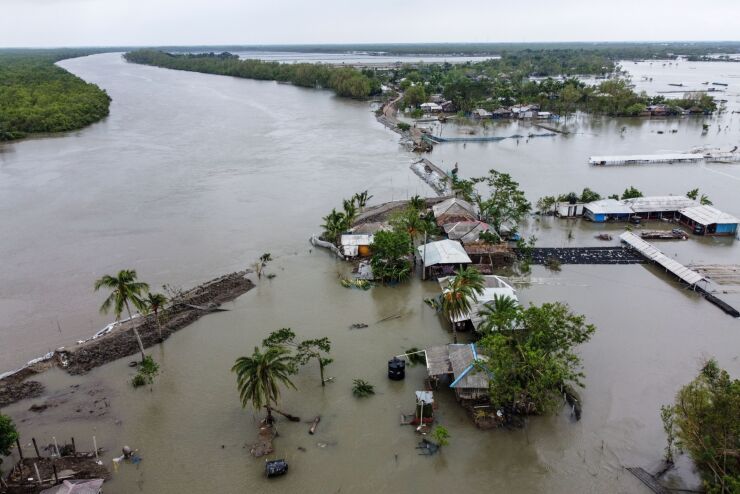
The energy transition and global deployment of renewable energy is the greatest macroeconomic opportunity of our generation. Spurred on by the realization of benefits from the Inflation Reduction Act and an influx of capital, we're seeing an
Insurance is driving resilience
Growth in the renewable energy sector brings with it the need for insurance. Insurers are approaching these risks cautiously, however, especially for assets located in natural catastrophe-prone areas. With renewable energy assets having historically high loss ratios — insurance companies paying out more in claims than the premiums they collect — it's no surprise that insurers are cautiously approaching these risks, imposing narrow limits and strict underwriting guidelines. And as the list of cat-exposed areas grows, insurance increasingly becomes a key sticking point.
Although it's expected that carriers will be drawn to the renewable energy market because of its high growth potential, there is likely to be a continued focus on underwriting profitability, which in turn will drive the need for asset resilience. As some asset owners and investors struggle to obtain insurance or can only procure policies with large deductibles and low sublimits, they will increasingly look inward to reflect on how they can build more resilient assets and explain that narrative to insurers. Rather than scare off underwriters, relying on improved resilience technology and data modeling will allow insurers to pinpoint the most insurable, sustainable projects, and in some cases, reward asset owners for resilience and transparency.
Designing for resilience
Fortunately, new technologies to improve resilience in renewable energy assets are rapidly emerging. Technology advancements such as autonomous robots for site monitoring, automatic hail stow programs, and third-party battery monitoring software to improve performance and prevent thermal runaway, are
These technologies provide important new ways to monitor sites and catch potential problems before they even start. However, some decisions that can impact exposures can only be made in the design phase. For example, increasing solar racking height to above-forecasted flood levels may have a modest increase in cost to elevate equipment, but can more than pay itself back in insurance expense savings. Once the project is built, the options are limited to retrofit sites for resilience. Asset owners should take the important steps to secure spare equipment and have maintenance and emergency plans in place.
Data plays a critical role
While resilient design is vital to mitigating risk,
For example, better hail and wind mapping data will enable more precise underwriting and technical pricing, and insurers will start to gravitate towards verifiable resilience and rated risks over broad-brush regional assumptions. The adoption of new technology such as field-survey drones, on-ground monitoring robots, and AI analysis is only improving the amount and quality of data available to underwriters to make informed decisions.
The recent adoption of hail resilience technologies like panel stow demonstrates how new data is informing underwriting. Research published by kWh Analytics in the
Paving the way for our clean energy future
The need to deploy as much renewable energy as quickly as possible is indisputable. Fortunately, rapidly emerging technology innovations are spurring advances in renewable energy resilience and data analysis. These modeling advances and forward-thinking mindset are beneficial to the industry long-term as carriers gain access to more precise data to accurately price risk and potentially incent and reward resilient builds.
To start reaping some of these benefits, asset owners should work with their brokers to ensure that their property insurance is appropriately marketed — not all carriers have the ability to consider resiliency when pricing risk. Likewise, building resilient assets will improve the industry loss ratio, which will ultimately drive rates down and ensure a stable, sustainable energy infrastructure for the future. We must continue to leverage resilience and data solutions with urgency to pave the way for scaled renewable energy deployment and mitigate the ever-growing threat posed by climate change.





